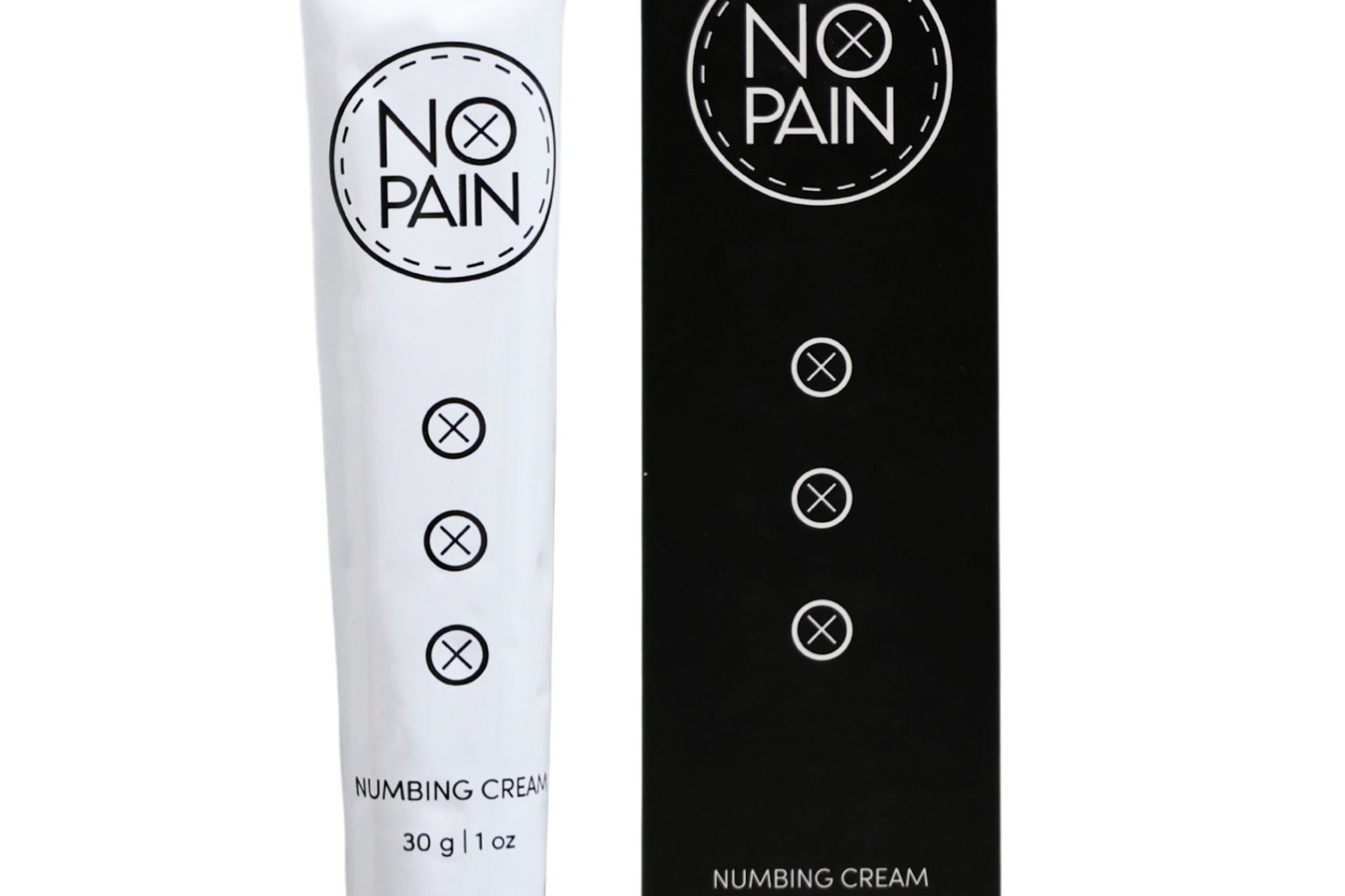You’ve just gotten a new tattoo, and you're excited to watch it heal. But as the days pass, you notice something unsettling. The sharp, crisp lines you saw in the studio now look fuzzy, blurry, or have developed little spiderweb-like tendrils under the skin.
This unfortunate phenomenon has a name: tattoo blowout.
It’s a frustrating experience, but don’t panic. Understanding what a blowout is, why it happens, and what your options are is the first step toward fixing it. This guide will walk you through everything you need to know.
What Exactly Is a Tattoo Blowout?
To understand a blowout, you need to think of your skin in three simple layers:
-
Epidermis: The top layer of skin that you see, which constantly sheds and renews itself.
-
Dermis: The stable middle layer. This is the "sweet spot" where ink must be deposited to create a permanent, sharp tattoo.
-
Hypodermis (Subcutis): The deepest layer, which is primarily composed of fat and connective tissue.
A tattoo blowout occurs when an artist injects the ink too deep, pushing it past the dermis and into the hypodermis. Unlike the stable dermis, the fat and tissue in this bottom layer don't hold the ink in place. The ink particles spread out uncontrollably, creating that signature blurry, fuzzy, or "bleeding" look under your skin.
How Common Are Tattoo Blowouts?
If you’re wondering whether tattoo blowouts are rare or surprisingly frequent, here’s the truth: they’re not as uncommon as you might hope—especially among newer artists still mastering their craft. Understanding exactly how deep to run the needle takes both training and experience. It’s easy to misjudge, and even tiny shifts can make a big difference.
Some factors can quietly raise your risk:
- Fine Line or Tiny Tattoos: Designs packed with delicate details or tight linework need extra precision. Any wobble here makes blowouts more likely.
- Tricky Locations: Tattoos on thin-skinned or high-motion spots—like fingers, wrists, or the tops of feet—don’t offer the same stable canvas as, say, your upper arm. Thin skin simply gives less “wiggle room” for error, making blowouts more common.
If it happens to you, know that you’re definitely not alone. Even seasoned artists have encountered a blowout at some point—it’s a rite of passage in the tattoo world.
The Primary Causes of a Blowout
While it's something every tattoo artist works hard to avoid, a few factors can lead to a blowout.
-
Artist Inexperience or Error: This is, by far, the most common cause. An artist with a "heavy hand" who pushes the needle too deep is the primary reason blowouts occur. It can also happen if the machine is held at the wrong angle or if the artist doesn't properly adjust their technique for different body parts. An unsteady hand, often seen in novice tattoo artists, can lead to inconsistent needle depth and angle, increasing the likelihood of a blowout.
Mastering needle depth and angle is crucial for delivering clean, lasting tattoos. Beginners should focus on consistency—maintaining the same needle depth and angle throughout the tattoo to avoid mistakes. Choosing appropriate areas is also important: starting on thicker-skinned spots (like the upper arm or thigh) can help new artists build confidence before moving on to trickier, thinner-skinned regions more prone to blowouts. Avoiding high-risk zones, at least in the beginning, gives you a chance to refine your skills and understand how skin reacts in different locations.
Ultimately, many blowouts can be prevented by practicing good technique and taking the time to learn how skin, needle, and machine all interact.
-
Tattoo Placement on Thin Skin: Some areas of the body are much more prone to blowouts simply because the skin is incredibly thin, and there's very little margin for error between the dermis and the fat layer. High-risk areas include the inner bicep, ankles, tops of the hands and feet, wrists, and ribs.
-
Over-Stretching the Skin: If the skin is stretched too tightly during the tattoo process, it can sometimes cause the ink to be deposited unevenly, contributing to a blowout when the skin returns to its natural state.
Tips for New Tattoo Artists: Preventing Blowouts from Day One
If you’re a newer tattoo artist still building your skills, the threat of blowouts can feel a bit intimidating. The good news? Careful attention and a bit of patience go a long way.
-
Choose Beginner-Friendly Locations: Focus your practice on parts of the body with thicker skin and a generous dermis layer—think upper arms, thighs, or shoulders. These areas are far more forgiving and give you more margin for error as you refine your depth control.
-
Master Your Needle Depth: The most reliable way to steer clear of blowouts is by learning exactly how deep your needle should go. Watch for that distinctive skin bounce and moderate your pressure accordingly. If in doubt, err on the side of going a touch shallower and build your confidence as you go.
-
Consistent Angle and Pressure: Stay mindful of your hand angle and the steadiness of your movements. Sudden shifts, rushing, or letting fatigue sneak in can all lead to accidental over-penetration.
Remember, every professional was once a beginner. Taking it slow and paying close attention to your basics pays off—both for your skill set and for your clients’ tattoos.
How Clients Can Help Prevent Tattoo Blowout
While most of the onus is on your artist, you play a part in ensuring your tattoo heals crisp and clean.
- Choose Your Artist Carefully: Reputation matters. Take the time to review an artist’s portfolio—focus on photos of fully healed tattoos, not just fresh ones. Look for sharp, consistent linework across a range of skin types and placement areas.
- Ask the Right Questions: Don’t be shy about discussing your concerns. Ask how your artist approaches tricky spots with thin skin or how they adjust their needle depth and technique for different body parts.
- Be Mindful of Placement: Certain areas, like the wrists, ankles, and the tops of hands and feet, are naturally more blowout-prone. If it’s your first tattoo or you’re especially wary, discuss safer placement options with your artist.
- Communicate During the Session: If something feels unusually painful or if they’re going over the same spot repeatedly, speak up! Good artists value your feedback.
- Follow Aftercare Instructions: Even the best tattoo work can go awry if you ignore aftercare. Gently follow all cleaning, moisturizing, and protection guidelines—this will minimize swelling and help your design settle as intended.
By staying informed and proactive, you help stack the odds in favor of a tattoo that looks as good healed as it did on day one.
Can a Tattoo Blowout Be Fixed?
This is the most important question, and it requires an honest answer. First, the bad news: a blowout is permanent and cannot be magically "undone." The ink has already spread, and you can't put it back in the bottle.
Now for the good news: you have several effective options to correct it.
-
Wait and See: Before making any drastic decisions, wait at least a month or two for the tattoo to fully heal and settle. Sometimes, what looks like a severe blowout can soften and become less noticeable as the skin completely recovers.
-
A Strategic Cover-Up or Rework: This is the most common solution. A skilled and creative artist can design an addition or a full cover-up that cleverly conceals the blowout. This often involves strategically adding darker shading, thicker lines, or background elements (like smoke, clouds, or flowers) to absorb the blurry edges and make the design look intentional.
-
Laser Tattoo Removal: Laser treatment is a highly effective option. A specialized laser can target the spread-out ink particles, breaking them up so your body can flush them away. You may not even need to remove the whole tattoo; a few sessions can often be enough to significantly fade the blowout to the point where it's virtually invisible.
A Note on Surgical Tattoo Removal
Surgical removal is sometimes considered when a tattoo blowout is especially severe and other solutions just won’t cut it. In this procedure, a medical professional actually excises, or cuts out, the skin containing the unwanted ink. The edges of the healthy skin are then stitched together.
While this approach reliably gets rid of the problem area in one session, it’s a serious option with real trade-offs. Surgery will leave a scar in place of the tattoo, and recovery takes longer compared to less invasive options. Generally, surgical removal is reserved for very small tattoos, persistent blowouts that don’t respond to lasers, or situations where scarring is an acceptable trade for eliminating a particularly troubling mark.
The Role of Proper Healing
While aftercare cannot fix a blowout that has already occurred due to technique, improper healing can absolutely make a bad situation worse.
An infection or heavy scabbing can damage the surrounding skin, causing further ink loss and making the blowout appear even more prominent or distorted. Whether you're healing the initial tattoo, a new cover-up piece, or the sensitive skin after a laser session, a clean and effective aftercare routine is crucial.
Proper Aftercare: Your Best Defense
Choosing the right artist and following their aftercare instructions can significantly reduce your risk of a blowout in the first place. Even with the best technique, improper healing—like scratching, picking, or skipping the basics—can invite infections, worsen pigment spread, and dull the crispness of your lines. And remember, even professionally done tattoos may require corrections over time as pigments naturally lighten and spread. Staying diligent with care helps minimize these effects.
Using a gentle, antimicrobial wash like our No Pain Tattoo Cleansing Foam prevents infection. Following up with our breathable No Pain Tattoo Soothing Gel and No Pain Tattoo Aftercare Balm promotes healthy skin regeneration, giving your skin the best possible chance to heal cleanly. Our No Pain Tattoo Aftercare Bundle provides everything you need to ensure any new work you get heals perfectly.
The best way to prevent a blowout is to choose an experienced, reputable artist for your next tattoo. Do your research, look at healed photos in their portfolio, and never be afraid to invest in quality.


